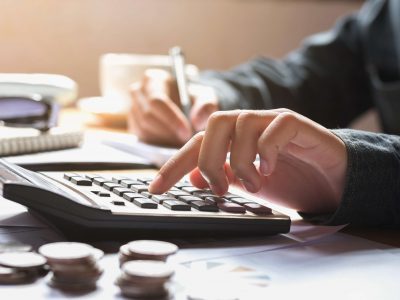
Having up-to-date records also helps you better plan for, take advantage of, and record government subsidies for farmers. This aims to help Brenton identify reliable pasture options that can sustain farming in dry sandhill country of his Waikerie property. Cath and Fred Clark of Roma, Queensland, run one of 24 grazing businesses across southern Queensland and northern NSW that have been learning drought-resilient practices through the FDF’s Drought Resilient Soils and Landscapes Program. “Funding will focus on accelerating the reduction of agricultural emissions, improving greenhouse gas accounting and investing in the new Zero Net Emissions Agriculture Cooperative Research Centre. The programme is now set to expand into a broader range of crops including corn, wheat and barley, and geographically across eastern Europe. The companies embarked on a feasibility study last year to evaluate regenerative agriculture practices’ impact on curbing carbon emissions, increasing biodiversity and improving soil health.

Depreciation Software – CenterPoint Depreciation
The use of fair value accounting in agriculture can lead to volatility in reported earnings, as it reflects market conditions at the reporting date. This can affect the comparability of financial statements over time and between different entities. To mitigate this, detailed disclosures are often required, explaining the assumptions and methods used in determining fair values, as well as the potential impact of changes in those values. The Interpretations Committee received a request seeking clarification on paragraph 25 of IAS 41. An entity does not include any cash flows for financing the assets or re‑establishing biological assets after harvest (for example, the cost of replanting trees in a plantation forest after harvest). Agricultural accounting deals with unique aspects like seasonality, biological assets, inventory management in agriculture, and specific government subsidies and tax regulations.
Tax Implications of Farming Operations
The one downside to this method is that it is not necessarily indicative of future performance. Recording stock changes is imperative to have a healthy account of your farming business. When it comes to agricultural subsidies, the only constant is change; the government may subsidize milk production one year, and pork production the next. Make sure to keep track of subsidies and account for them, especially if they’re made as direct payments.
Using the Standards
Reporting on an accrual basis allows entries of revenue and expense in the absence of cash transactions allows for consistency in financial reporting across companies and industries. Capital assets are significant purchases that a farm expects to use over several years, such as machinery, buildings, and land improvements. These assets typically provide value for multiple years and are subject to depreciation, which is the process of allocating the cost of a capital asset over its useful life. Depreciation is a non-cash expense that reduces taxable income and reflects the wearing out, decay, or obsolescence of the asset. It is crucial for farmers to calculate depreciation accurately to ensure they are not only complying with tax regulations but also gaining a realistic view of their assets’ value over time, which is essential for long-term financial planning.
- Just this August, a derecho event destroyed an estimated 200–400 million bushels of crops in Iowa alone, reducing the state’s projected yield by up to half.
- Maintain original loan values and use amortization schedules to plan cash flow requirements.
- Farm accountants are specialists who cater to the unique financial needs of agricultural enterprises.
- EasyFarm is a unique software that we believe farmers will find easier to use than standard bookkeeping software.
- IAS 41 Agriculture sets out the accounting for agricultural activity – the transformation of biological assets (living plants and animals) into agricultural produce (harvested product of the entity’s biological assets).
11 Financial’s website is limited to the dissemination of general information pertaining to its advisory services, together with access to additional investment-related information, publications, and links. Finance Strategists has an advertising relationship with some of the companies included on this website. We may earn a commission when you click on a link or make a purchase through the links on our site. They monitor changes in laws, analyze their implications, and implement necessary adjustments to business practices. Through thorough financial analysis, they can highlight areas of the business that are underperforming and suggest corrective measures. As a dedicated accountant or tax practitioner, you’re now part of a community that values staying ahead in the ever-evolving world of finance.

If an entity applies this Standard for periods beginning before 1 January 2003, it shall disclose that fact. In determining cost, accumulated depreciation and accumulated impairment losses, an entity considers IAS 2, IAS 16 and IAS 36 Impairment of Assets. The impact of the biological transformation on price is not expected to be material (for example, for the initial growth in a 30‑year pine plantation production cycle). When bearer plants are no longer used to bear produce they might be cut down and sold as scrap, for example, for use as firewood. Such incidental scrap sales would not prevent the plant from satisfying the definition of a bearer plant.
Farm Accountant FAQs
The June 2014 Amendment therefore fails to meet the Board’s own criteria for a new or amended Standard. On the other hand, if an entity enters into a contract to sell mature cattle at a future date and has mature cattle at a balance sheet date, it could be argued that the cattle exist in the form in which they will be sold at the balance sheet date. However, it accounting for agriculture could also be argued that the cattle do not yet exist in the form in which they will be sold at the balance sheet date since further biological transformation will occur between the balance sheet date and the date of delivery. It is premature to require recognition of fair value changes in net profit or loss, until performance reporting issues are resolved.
- Consequently, farmers must keep their stock records up to date by meticulously tracking these changes in their accounting systems.
- The Board noted that IAS 1 and IAS 38 apply to entities that undertake agricultural activity, as well as to those in other activities.
- It would be illogical to continue fair value measurement when the agricultural produce is measured at historical cost.
- For instance, in a period of rising prices, FIFO will result in lower COGS and higher reported income, while LIFO will show higher COGS and lower reported income.
- Mr Finnegan and Ms McConnell acknowledge that measuring bearer plants at fair value may sometimes be difficult.
- Fair value is the price that would be received to sell the biological asset or agricultural produce in an orderly transaction between market participants at the measurement date.
E65 did not specify how to account for contracts for the sale of a biological asset or agricultural produce. The Standard indicates that the fair value of a biological asset or agricultural produce is not adjusted because of the existence of a sales contract (paragraph 16). https://www.bookstime.com/ The Standard encourages, but does not require, separate disclosure of the effects of the factors resulting in changes to the carrying amount of biological assets, physical change and price change, when there is a production cycle of more than one year.
